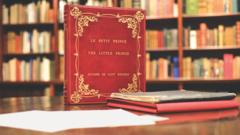In an exciting academic revelation, an Oxford researcher has uncovered a rare handwritten variant of “Sonnet 116,” one of William Shakespeare’s most beloved love poems. This significant discovery offers insights into how the sonnet’s meaning may have shifted during the mid-1600s, amidst the turmoil of the English Civil Wars.
Commonly recited at weddings, "Sonnet 116" traditionally champions unwavering devotion, encapsulated in its memorable line, "Love’s not time’s fool." However, the newly discovered manuscript hints at an alternative resonance, potentially reflecting the complex emotional landscape of a society grappling with conflict. Leah Veronese's findings, published in The Review of English Studies, have sparked excitement among literary historians and Shakespeare scholars alike.
James Shapiro, a noted expert from Columbia University not involved in this particular find, expressed enthusiasm at the rarity of such manuscripts. "Any new trace of Shakespeare’s work is rare and incredibly exciting," he remarked. The discovery serves not only as a testament to Shakespeare's timeless relevance but also illustrates how his poetry has historically been adapted for various social and political climates.
Experts emphasize that Shakespeare's works have always harbored political dimensions and that they are often reshaped to fit the needs of different eras. As Shapiro notes, "People repurposed it in their own day — as in ours — for different political ends," underscoring the playwright's influence across generations and contexts. This remarkable discovery is not just a glimpse into the past but an affirmation of the perpetual dialogue between art and society.








